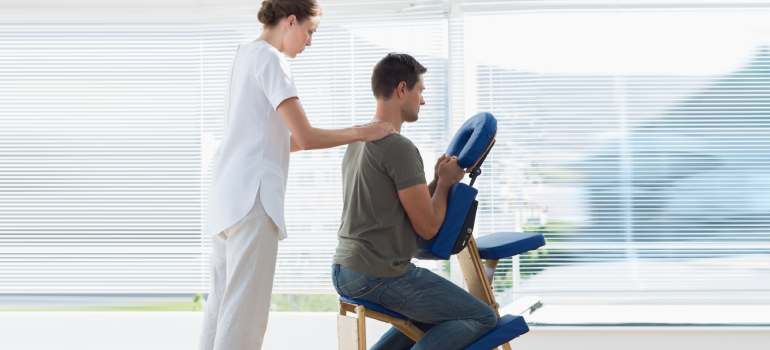Neurological conditions are disorders which affect the structures and functioning of the brain, spinal cord as well as peripheral nerves. Common neurological disorders include Parkinson’s, stroke, multiple sclerosis, amyotrophic lateral sclerosis which affect the central nervous system and Guillain-Barré syndrome, peripheral neuropathy which affect the peripheral nervous system
Neurological physiotherapy is a specialisation of physiotherapy that helps improve mobility, muscle strength, balance and quality of life of people which neurological disorders
Common ailments
Common problems arising with neurological disorders include
• Sensory impairment-
persistent or sudden onset of headache
Tingling or numbness
• Double vision or loss of sight
• Slurred speech
• Motor impairment-
Weakness of muscles
Inability to perform daily tasks
Muscle rigidity
Muscle tightness
• Lack of balance
• Lack of coordination
• Tremors
Benefits of neurological physiotherapy
Physiotherapy in neurological conditions aims to:
• improve the range of motion and muscle strength- physiotherapy helps maintain the available range of motion at a particular joint and with time helps improve it, it helps strengthen the weakened musculature as well as promote voluntary control of the limbs
• Manage spasticity- physiotherapy helps in controlling spasticity that is resistance to movement and even helps decrease it
• help in mobilisation of the patient- with regular mobility activities physiotherapy helps in improving mobility of the patient, includes bedside mobility.In some cases, the patient might need mobility aids such as a walking frame or specialised wheelchair as well as the training to use them.
• Improve gait patterns
• Improve balance and coordination
• Correcting faulty posture- physiotherapy helps maintain proper posture and prevent joint contracture arising from prolonged faulty posture.In cases with severe motor dysfunction, your physiotherapist may prescribe splints to aid with posture and joint stability.
• Improve gross and fine motor skills
• To improve respiratory function-physiotherapy helps unclog the patient’s airways and help them return to normal physical activity and exertion.
• To prevent secondary complications – it helps prevent problems like deep vein thrombosis, bed sores
Physiotherapy Interventions in neurological disorders
• Interventions to improve sensory function
Mirror therapy
Repetitive sensory discrimination activities,
Bilateral simultaneous movements and repetitive task practice
Compression techniques
Mobilisations
Electrical stimulation
Thermal stimulation
• Interventions to improve flexibility and joint integrity
Soft tissue mobilisation
Joint mobilisation
Range of motion exercises -the can be active, active assisted or passive depending upon the capability of the patient with end range stretch
Splinting
• To decrease spasticity
Positioning – to allow the stretch and sustained stretch, and in anti synergistic pattern.
Use of slow rocking movements.
Use of diagonal patterns of PNF
Use of slow or prolonged icing to decrease neural firing rates.
Electrical stimulation of the antagonist muscles.
Soothing verbal commands and relaxation techniques
• To improve movement control and motor function
Initially training is focused on using different parts of the body separately
Reach activities
Grasping activities
• To improve muscle strength
For patients with extreme weakness gravity assisted exercises are conducted with the help of suspensions or slings, aqua therapy can also be done
For patients with better muscle strength resistive exercises are done using Thera bands, weights, isokinetic devices
Training is started with low intensity concentric exercises with prolonged rest periods
In later stages eccentric exercises are done to reduce cardiovascular stress
• To improve postural control
The patient is encouraged and taught to use the following postural patterns correctly
Rolling
Supine to sitting and back
Bridging
Sit to stand and sit down transfers
Transferring to different surfaces and different t heights
• To improve balance and coordination
Weight shifting
Improve base of support
Dual task training





